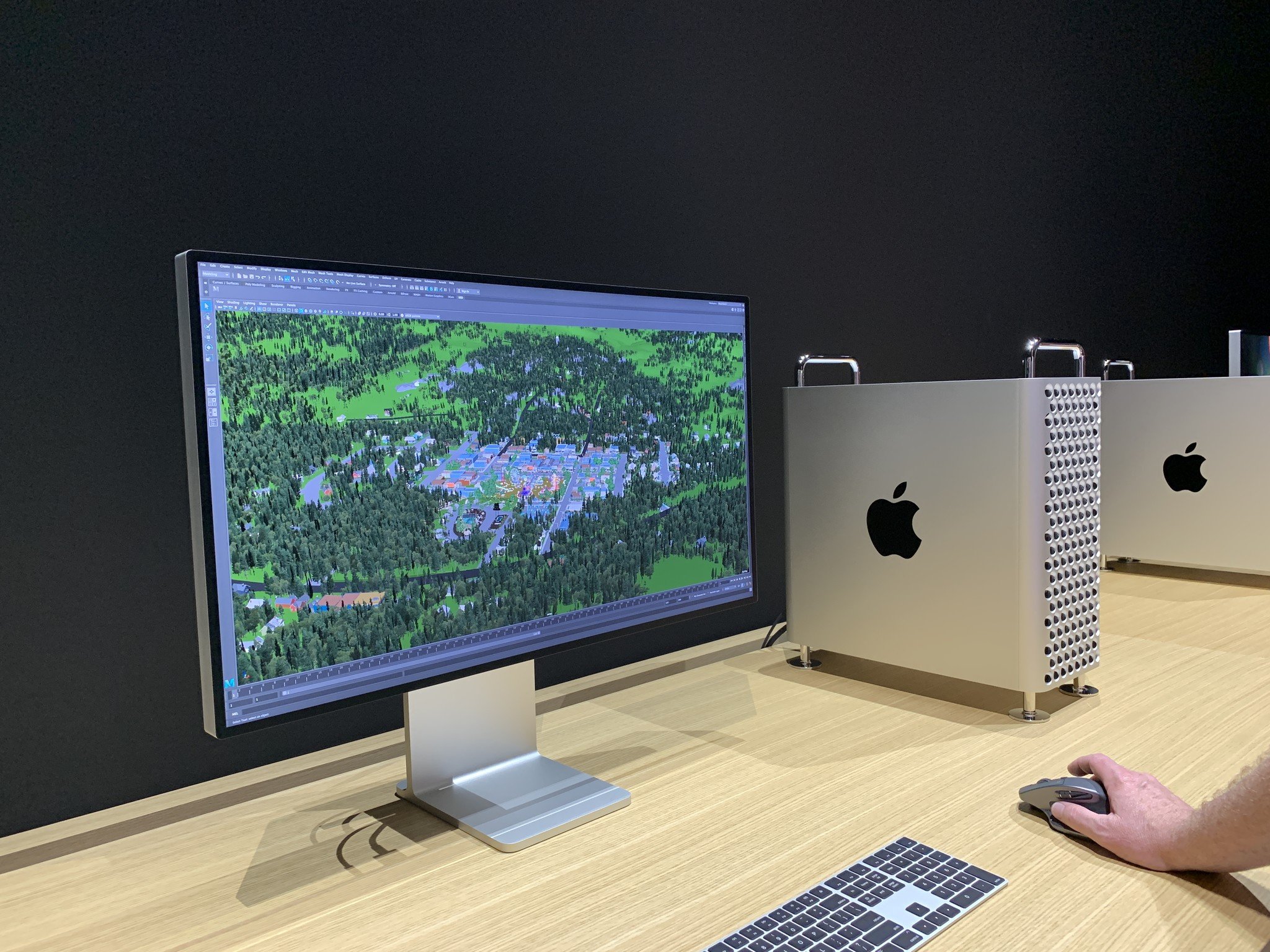How the New Mac Pro Can Impact Accessibility

After the WWDC keynote ended, I was invited to join my fellow members of the press at Apple's Mac Pro lab, located across the street from the San Jose Convention Center. I happily agreed although I did wonder on the walk over how much I'd actually see there that would be relevant to accessibility.
It turns out, I saw quite a bit.
While the new Mac Pro and accompanying Pro Display XDR seemingly don't scream "accessibility" at first blush, the truth is they can prove accessible in some interesting ways.
The Mac Pro's Wheels
One highlight of John Gruber's live episode of The Talk Show, with special guests Craig Federighi and Greg Joswiak, came when Gruber asked about the price of the Mac Pro's optional set of wheels. Federighi's response, which was met with raucous laughter, was "How much is the perfect wheel worth?"
Whatever the price, these wheels just may be perfect from a disability point of view. Imagine you're working at a high-end production studio of some sort and you have physical motor delays that make moving your workstation difficult. Maybe you need to move your new Mac Pro across the room to collaborate with someone—or you're working with colleagues out of a remote location—but you don't have the strength or dexterity necessary to lift the machine. You certainly could ask for help, but there's another solution.
Attaching the aforementioned "perfect wheels" would literally make your Mac Pro mobile. It sounds trivial, but wheels have the potential to be a serious assistive tool for a certain type of user. Instead of lifting, someone could just push their computer around when it's necessary to move it. And of course, the convenience for people without disabilities stands too. The wheel is arguably the greatest invention in human history, after all.
The Pro Display XDR
Apple's new monitor for the Mac Pro is where it gets especially interesting from an accessibility perspective. I had a bit of an epiphany after watching an Apple employee demo zooming in on some sheet music in Logic in the Mac Pro lab. It was in that moment I realized the Pro Display XDR could seriously benefit a professional who may be visually impaired.
iMore offers spot-on advice and guidance from our team of experts, with decades of Apple device experience to lean on. Learn more with iMore!
Suppose you're visually impaired and working at Pixar or some other high-end production shop. With the release of the Mac Pro and the Pro Display XDR, you could theoretically request one of the displays as a reasonable accommodation in order for you to do your job. (Budgets will vary from company to company, but I doubt Pixar needs to pinch pennies.) The monitor's super high resolution, contrast, and colors—combined with the Mac's accessibility software—would make doing video work or other types of visual work much more accessible.
Likewise, the fact the Pro Display HDR can rotate from landscape to portrait makes it such that someone who has low vision can work in whatever orientation they wish (and change on the fly) all the while reaping the technical benefits that make the display such a remarkable piece of kit.
The Bottom Line
The accessibility use cases I've outlined here are esoteric and niche, but there's a great symmetry to it. The redesigned Mac Pro is most definitely a niche machine, but there are pro users out there with disabilities. Thus, these scenarios are not at all far-fetched—they could be very real for many professionals who are disabled.
Steven is a freelance tech writer who specializes in iOS Accessibility. He also writes at Steven's Blog and co-hosts the @accessibleshow podcast. Lover of sports.

